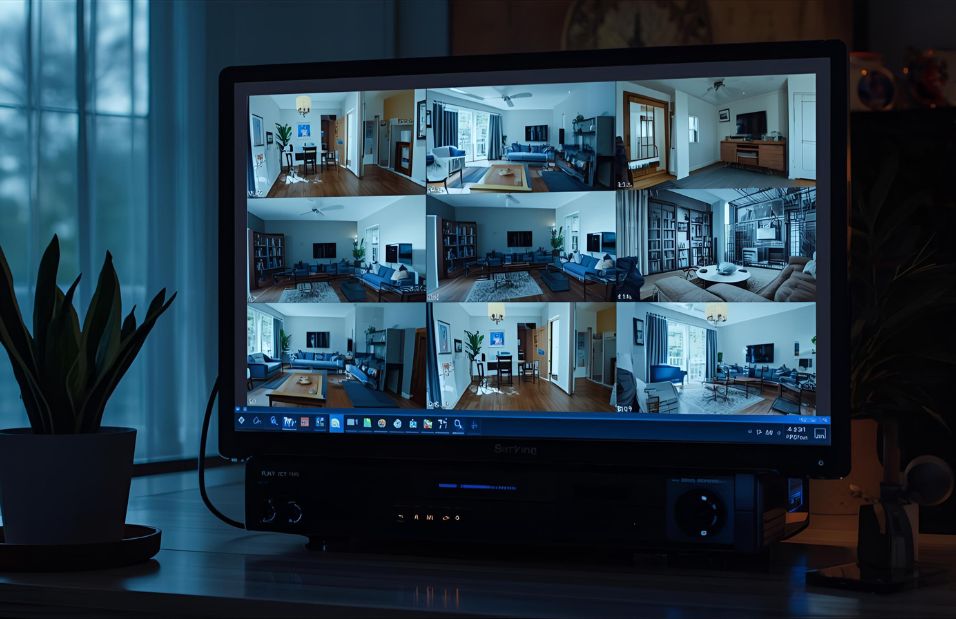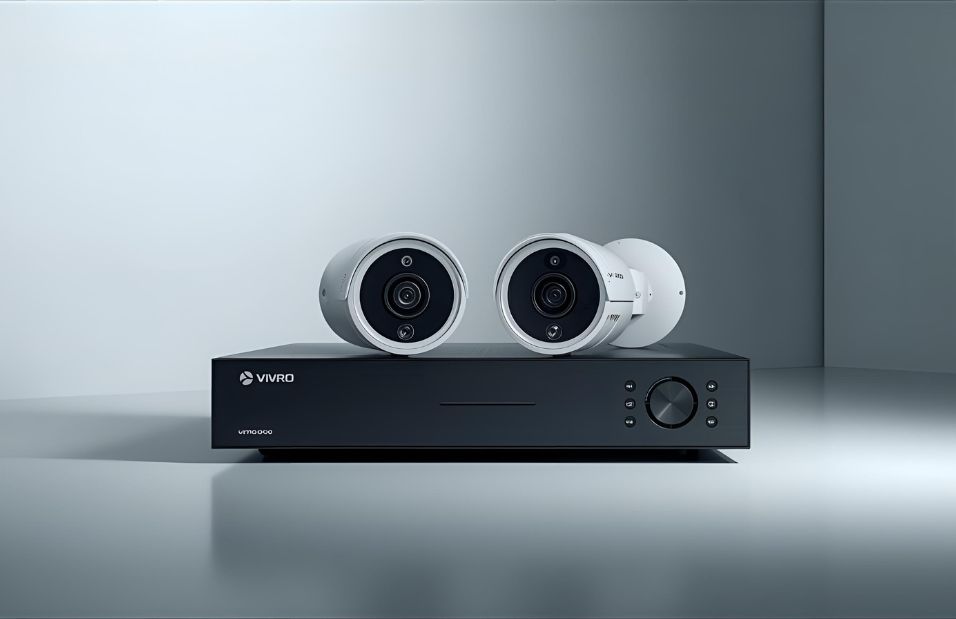What if your current security setup isn’t as future-ready as you think? With technology advancing rapidly, your existing system may no longer meet the demands of high-resolution surveillance and flexible integration. Whether you’re using an IP camera, CCTV camera, or a traditional security camera system, ensuring it’s compatible with modern recording technologies like a DVR or NVR is essential to maintaining optimal protection.
Upgrade your surveillance with a new DVR and BNC security camera system for enhanced video clarity, reliable recording, and seamless compatibility with existing coaxial infrastructure. This cost-effective solution supports high-resolution monitoring, remote access, and efficient data storage, making it ideal for securing homes or businesses with minimal disruption and maximum coverage.
In this blog, you’ll learn which types of cameras are compatible with BNC-based systems, how to seamlessly integrate an IP camera with a DVR, and why upgrading your surveillance setup could be the smartest move you make for long-term security.
Understanding DVR, NVR, and Camera Compatibility in a Security Camera System

Understanding Camera Compatibility Across Systems
When upgrading your CCTV system, ensuring camera compatibility with your existing DVR is crucial. Not all security cameras are compatible with all recorders, especially when dealing with a mix of analog CCTV cameras, IP security cameras, and wireless security cameras. Compatibility depends on the technology your DVR supports—whether it’s limited to analog signals, hybrid formats, or advanced digital protocols.
Can Analog CCTV Cameras Work with Modern DVRs?
Yes, many modern digital video recorders support analog CCTV cameras, making it possible to retain your existing cameras while still benefiting from enhanced recording capabilities. This backward compatibility offers a cost-effective path to upgrade without replacing your entire CCTV system. However, always verify which security cameras and DVRs are compatible to avoid integration issues.
Integrating IP and Wireless Security Cameras
If you’re considering IP security cameras or a wireless security camera, the process of integration is different. Standard DVRs may not directly support these formats. In such cases, either a hybrid DVR or a separate network video recorder is required. You may also need to connect IP cameras via network configuration to ensure seamless data flow and recording.
Making the Most of Your Existing Security Cameras
You don’t always need to replace your existing security cameras to improve your system. By understanding what your DVR supports and selecting cameras with the right signal types, resolutions, and connectors, you can expand your setup while maintaining full compatibility. This strategic approach ensures you get the most from both your digital video recorder and your current hardware.
See more about…Mac Compatible CCTV DVR
How to Connect IP Cameras and CCTV Cameras Using BNC and Other Cable Formats

Upgrading or integrating different camera technologies within a single surveillance system requires a clear understanding of cable formats, device capabilities, and compatibility. Whether you want to connect IP cameras, use BNC cables, or work with legacy CCTV systems, knowing the right connection method ensures smooth operation and long-term performance.
Understanding Camera Formats and Cable Types
Before you start installation, you need to identify the format of your camera and type of cable required. Traditional CCTV cameras typically use coax cable with BNC connectors, while digital cameras such as IP models rely on Ethernet cables and network protocols. Some modern systems, including brands like Hikvision, offer hybrid DVRs that support both analog and IP inputs, giving you the flexibility to work across different technologies.
How to Connect IP Cameras to a DVR System
To connect IP cameras to a DVR, the recorder must support IP inputs—often seen in hybrid or network video recorders. In cases where you’ve replaced the DVR with a newer model, ensure it allows IP integration either via dedicated ports or surveillance software. This setup lets you manage feeds remotely, adjust settings, and store high-definition footage efficiently.
Integrating BNC and Coax with Legacy Cameras
Older cameras without network support typically require coax cable and BNC cables to transmit video signals. This analog format remains reliable, especially for small installations or when reusing existing infrastructure. For best results, match your cable length and quality with the camera’s resolution to avoid signal loss, particularly in high definition systems.
Final Thoughts on Mixed Camera Systems
If you’re integrating various security cameras to be able to function under a unified system, it’s essential to assess the compatibility of formats, cabling, and DVR capabilities. Whether you rely on modern digital cameras or traditional analog setups, a thoughtful approach to system design will maximize efficiency, image quality, and monitoring control.
See more about...Security Camera DVR Alarm Input
Types of Cameras Compatible with DVRs and How CCTV Camera Work on Modern Systems

When integrating security cameras into a modern DVR setup, understanding compatibility is essential for ensuring efficient performance and system reliability. Traditional DVRs are primarily designed to work with analog CCTV cameras that transmit video signals over coaxial cables using standard analog video protocols. These cameras are simple to install and budget-friendly, making them a practical choice for basic surveillance needs. However, as technology evolves, DVRs now often support a broader range of protocols, including those required for HD analog and hybrid formats.
If you’re working with digital or IP-based systems, it’s important to know that DVRs and IP cameras don’t always connect directly. To use IP cameras with a DVR, you’ll typically need a hybrid DVR or a system that supports IP integration. IP cameras connect over a wireless network or through Ethernet cables, and many models require a router to function effectively within the network. These setups offer advanced features such as high-resolution video, smart analytics, and remote access, which allow you to monitor your premises in real-time from anywhere.
While analog systems may suffice in some settings, we highly recommend that you consider the long-term advantages of digital systems. They offer better scalability, improved image quality, and easier integration with modern infrastructure. Connecting wirelessly can seem convenient, but it may result in poor quality footage if not configured properly. Direct Ethernet connections are typically more stable and secure.
A well-designed system will allow you to use both legacy analog cameras and newer IP models, giving you flexibility without sacrificing functionality. Understanding how each camera type works within your setup empowers you to make informed choices that improve surveillance effectiveness and adaptability.
See more about...Mac Security Camera / DVR
Conclusion
Upgrading your surveillance system with a new DVR and the right types of cameras can significantly enhance both performance and reliability. Whether you’re working with coaxial cables for analog connections or exploring advanced formats like HD-TVI, knowing your options allows for a smarter and more scalable setup. Careful attention to installation—whether you’re dealing with wireless cameras, wire runs, or network-based systems—is essential for achieving optimal results.
For users seeking higher resolution and smarter functionality, 4K and PoE (Power over Ethernet) cameras offer powerful benefits, especially when paired with hybrid DVRs that support modern standards. If you’re transitioning from older systems, make sure you understand how to convert signal formats, either through a DVR that supports multiple protocols or a dedicated converter.
By identifying compatible technologies, understanding the types of cameras that best suit your needs, and planning a precise installation, you can build a surveillance system that is not only efficient but also future-ready.
See more about…Best Mac Compatible CCTV DVR Software
Frequently Asked Questions (Upgrade Your Surveillance with a New DVR and BNC Security Camera System)
What is a BNC security camera?
A BNC security camera is an analog surveillance camera that uses a Bayonet Neill–Concelman (BNC) connector to transmit video signals over coaxial cables. These cameras are commonly used with DVR systems for monitoring and recording. BNC cameras are reliable, cost-effective, and provide stable video transmission, making them suitable for traditional CCTV setups and long-distance installations.
How to upgrade the DVR?
To upgrade a DVR, first check the manufacturer’s website for the latest firmware or software updates. Download the update file to a USB drive or follow the network upgrade option in the DVR menu. Insert the USB, access the system settings, and apply the update. Always back up important recordings before upgrading.
What is a DVR security camera system?
A DVR (Digital Video Recorder) security camera system is a surveillance setup that records video footage from analog cameras onto a hard drive. It uses coaxial cables to transmit video signals and is commonly used for home and business security. DVR systems allow playback, storage, and remote viewing, offering reliable monitoring at an affordable cost.
How to upgrade a CCTV camera?
To upgrade a CCTV camera, first check compatibility with your DVR or NVR system. Choose a higher-resolution camera, such as 4K or IP, for better image quality. Replace old analog models with modern IP or HD-over-coax cameras. Update firmware, ensure proper cabling, and adjust settings for optimal performance. Professional installation may enhance results.
